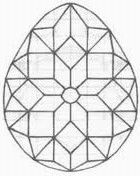I was very fortunate indeed during my 40 year career at Sotheby’s to have presided over the sale of so many famous, record-breaking gemstones. All of them were individuals and each for me had a special character and unique attributes. But without doubt the most Royal and legendary among all these stones was the Beau Sancy.
What was it that made this diamond so very special, and for me totally unforgettable?
Firstly, weighing in at 34.98 carats, the Beau Sancy is not particularly huge – at least by the standards of today – but in the late 1500s when King Henry IV of France sent out agents to purchase the largest diamond they could find, this extraordinary stone was their main discovery. It should be remembered that the Golconda region of India was effectively the only source of diamonds known at this date, and so the stone was infinitely rarer than it would be today.





